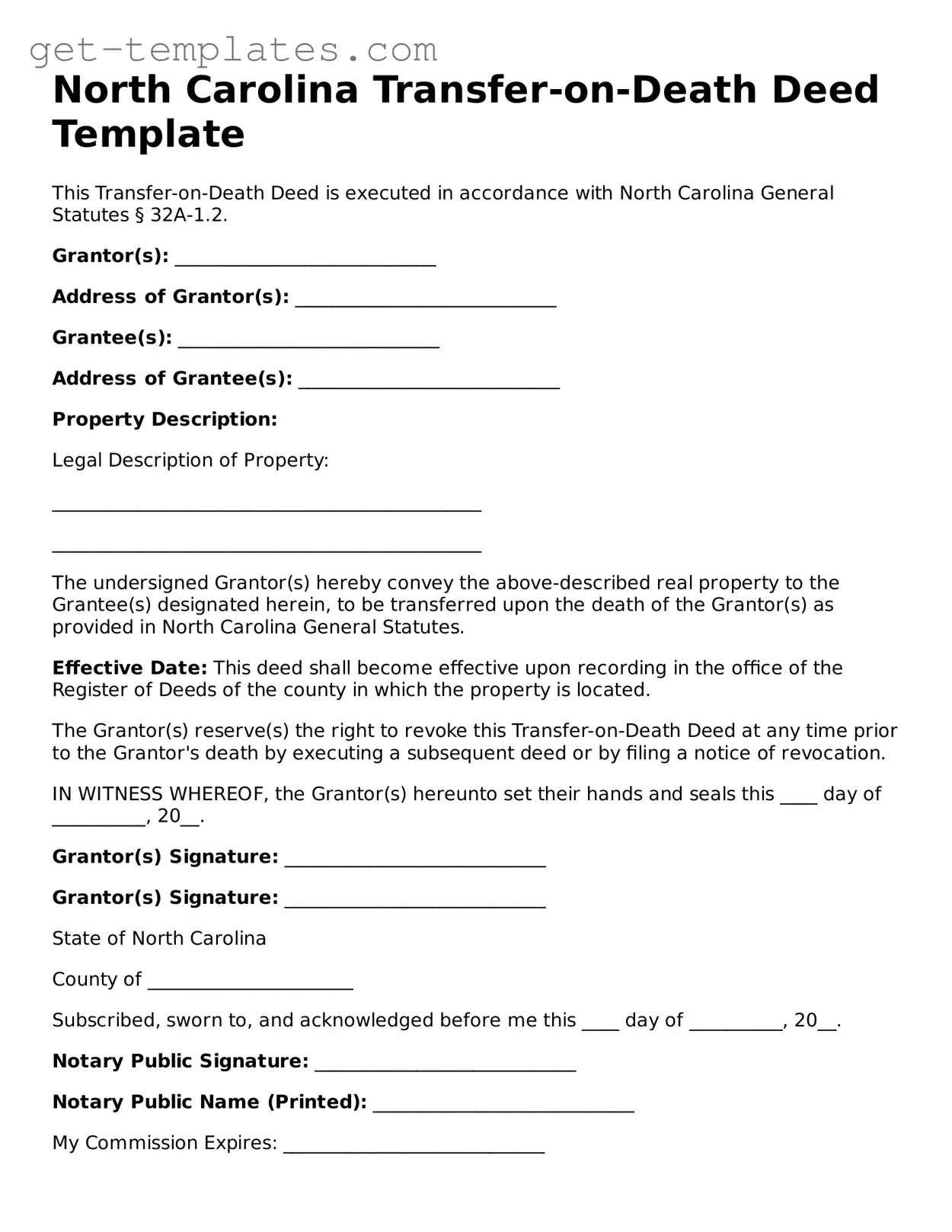North Carolina Transfer-on-Death Deed Template
This Transfer-on-Death Deed is executed in accordance with North Carolina General Statutes § 32A-1.2.
Grantor(s): ____________________________
Address of Grantor(s): ____________________________
Grantee(s): ____________________________
Address of Grantee(s): ____________________________
Property Description:
Legal Description of Property:
______________________________________________
______________________________________________
The undersigned Grantor(s) hereby convey the above-described real property to the Grantee(s) designated herein, to be transferred upon the death of the Grantor(s) as provided in North Carolina General Statutes.
Effective Date: This deed shall become effective upon recording in the office of the Register of Deeds of the county in which the property is located.
The Grantor(s) reserve(s) the right to revoke this Transfer-on-Death Deed at any time prior to the Grantor's death by executing a subsequent deed or by filing a notice of revocation.
IN WITNESS WHEREOF, the Grantor(s) hereunto set their hands and seals this ____ day of __________, 20__.
Grantor(s) Signature: ____________________________
Grantor(s) Signature: ____________________________
State of North Carolina
County of ______________________
Subscribed, sworn to, and acknowledged before me this ____ day of __________, 20__.
Notary Public Signature: ____________________________
Notary Public Name (Printed): ____________________________
My Commission Expires: ____________________________
Prepared by:
_______________________________________________
_______________________________________________
